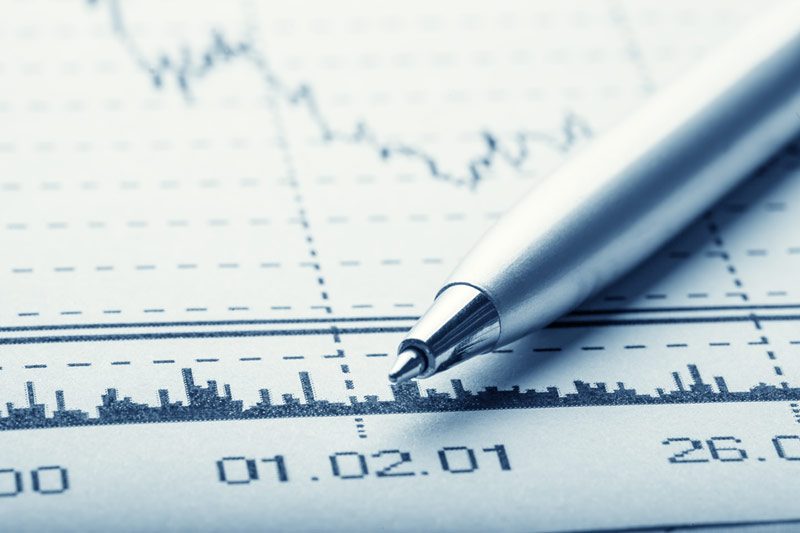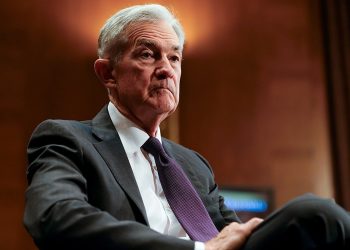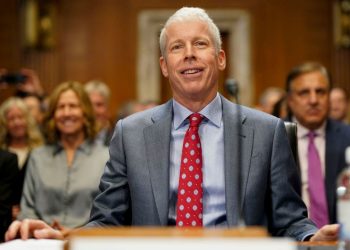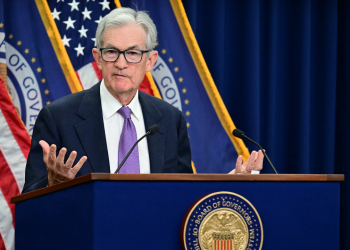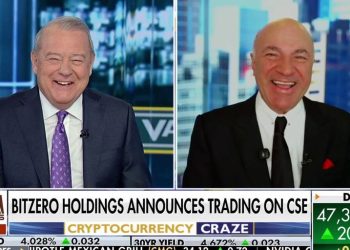By Lucia Mutikani
WASHINGTON (Reuters) – U.S. consumer spending surged in September as households boosted purchases of motor vehicles and traveled, keeping spending on a higher growth path heading into the fourth quarter.
The stronger-than-expected increase in spending reported by the Commerce Department on Friday was accompanied by elevated monthly inflation readings, against the backdrop of higher costs for services like housing. Spending is, however, seen cooling off in early 2024 as excess savings accumulated during the pandemic start running out, leaving economists convinced the Federal Reserve is done raising interest rates.
But risks of a rate hike remain.
“U.S. consumers still had some gas left in the tank last month that risks carrying into the current quarter,” said Sal Guatieri, a senior economist at BMO Capital Markets in Toronto.
“While we still expect spending and the economy to downshift sharply in the fourth quarter, the risk is that both will keep running hotter than the Fed needs to subdue still-stubborn services inflation.”
Consumer spending, which accounts for more than two-thirds of U.S. economic activity, accelerated 0.7% last month after an unrevised 0.4% rise in August, the Commerce Department’s Bureau of Economic Analysis reported. Economists polled by Reuters had forecast spending gaining 0.5%.
The increase in spending was spread across goods and services. Outlays on goods increased 0.7%, led by prescription medication, new light trucks, food and beverages as well as recreational goods and vehicles. Spending on services
shot up 0.8%, boosted by international travel, housing and utilities, healthcare and airline transportation services.
The data was included in the advance gross domestic product report for the third quarter published on Thursday, which showed consumer spending accelerating sharply, contributing to the fastest pace of economic growth in nearly two years.
Adjusting for inflation, consumer spending rose a solid 0.4% in September after ticking up 0.1% in August, a strong hand-off from the April-June quarter that bodes well for consumption and overall economic growth in the fourth quarter.
Growth, however, is unlikely to match last quarter’s blockbuster performance. Consumer tapped their savings and put away less money with the saving rate dropping to 3.4% from 4.0% in August.
Personal income rose 0.3% after gaining 0.4% in August. Income at the disposal of households after accounting for inflation and taxes dropped for a third straight month.
“That is not sustainable,” said James Knightley, chief international economist at ING in New York. “Savings are finite and are being exhausted at a rapid rate, with various estimates suggesting that excess savings accrued during the pandemic could be exhausted in the first half of next year.”
Excess savings are mostly concentrated among high-income households, according to economists, with low-income households believed to have long depleted their stash. Most people are turning on debt to fund purchases. Some of these people likely have student loans on which they resumed repayment this month, which could out them in a precarious financial position.
But not every economist sees rising credit card balances as a threat, arguing that consumers are still able to meet their debt obligations, thanks to a strong labor market. Wages increased 0.4% after advancing 0.5% in the prior month.
“U.S. households are healthy financially relative to past cycles,” said Chris Low, chief economist at FHN Financial in New York. “Debt levels are low, savings are still pretty high and income is solid. There is nothing compelling in the data suggesting a spending slowdown is inevitable.”
Stocks on Wall Street were trading higher. The dollar fell against a basket of currencies. U.S. Treasury prices were mixed.
WARMER MONTHLY INFLATION
Monthly inflation remained warm in September. The personal consumption expenditures (PCE) price index gained 0.4% after increasing by the same margin in August. Food prices climbed
0.3% and energy prices increased 1.7%.
In the 12 months through September, the PCE price index advanced 3.4%, matching August’s rise.
Excluding the volatile food and energy components, the PCE price index rose 0.3%, after edging up 0.1% in August. The cost of housing services increased 0.5%.
Monthly inflation readings of 0.2% on a sustainable basis are needed to bring inflation back to the U.S. central bank’s 2% target, according to economists. The so-called core PCE price index rose 3.7% on a year-on-year basis in September, the smallest gain since May 2021, after increasing 3.8% in August.
Stripping out housing, the core PCE price index rose by a mild 0.2%. The so-called super core, which is PCE services excluding energy and housing was stronger, increasing 0.4% after nudging up 0.1% in August. The super core PCE price index advanced 4.3% year-on-year in September.
The Fed tracks the PCE price indexes for monetary policy. Policymakers are watching the super core PCE price index to try and gauge their progress in combating inflation. The Fed is expected to leave interest rates unchanged next Wednesday as a recent surge in U.S. Treasury yields and stock market sell-off have tightened financial conditions.
Since March 2022, the Fed has raised its policy rate by 525 basis points to the current 5.25%-5.50% range.
“There is more work to be done to sustainably lower inflation towards the 2% target,” said Pooja Sriram, an economist at Barclays in New York.
Read the full article here


